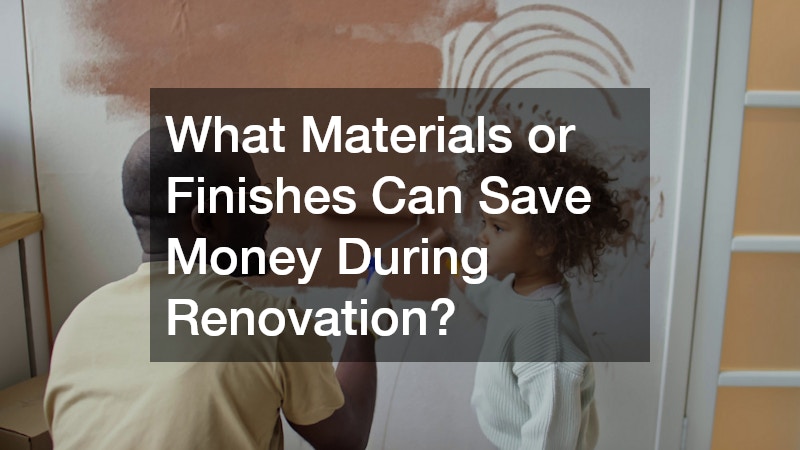Building on a Budget
Transforming your home doesn’t have to drain your savings. Whether you’re trying to increase property value, improve comfort, or simply modernize your space, there are countless ways to make impactful changes without overspending. House modification on a budget is not only achievable—it can be incredibly rewarding when approached strategically. This guide shares 10 hot tips for modifying your home affordably, while keeping things functional, stylish, and sustainable. From energy efficiency upgrades to smart renovation choices, let’s dive into how you can revamp your space without breaking the bank.
Homeowners often believe that significant changes require massive budgets, but the truth is, a well-planned approach and a willingness to roll up your sleeves can go a long way. From simple DIY projects and energy-saving upgrades to hiring contractors strategically and sourcing cost-effective materials, there are countless ways to revamp your space affordably.
In today’s housing market, even modest improvements can significantly boost property value, comfort, and functionality. More importantly, budget-friendly upgrades allow you to create a space that reflects your personality and needs—without compromising quality. Whether you’re a seasoned homeowner or tackling your first remodel, this guide will help you get the most bang for your buck.
1. What Are the Most Cost-Effective House Modifications?

When tackling house modification on a budget, it’s crucial to focus on projects that offer the most return on investment (ROI). One powerful way to save is by renting equipment rather than buying it. Renting tools like tile cutters, pressure washers, or paint sprayers allows you to complete tasks effectively without the hefty upfront cost.
Cost-effective house modification often includes simple but high-impact changes like repainting walls, updating light fixtures, or installing new cabinet hardware. These types of updates breathe fresh life into your home with minimal financial strain. Even updating outdated flooring with budget-friendly laminate or vinyl can drastically transform a room.
The key is to make modifications that both improve aesthetics and enhance function without requiring extensive demolition or professional labor. The sweet spot lies in targeting areas that make your home more livable and appealing—on your terms and your budget.
2. How Can I Improve My Home’s Energy Efficiency on a Budget?
Energy efficiency improvements are some of the best investments for homeowners. Not only do they reduce monthly utility bills, but they also make your house more comfortable year-round. Fortunately, you don’t need a massive renovation budget to make a big impact.
A practical starting point is addressing your water heater repair needs. Sediment buildup in water heaters reduces efficiency and increases energy use. Flushing your heater annually and insulating the tank with a water heater blanket can enhance performance.
Simple changes such as sealing air leaks with caulk or weatherstripping, upgrading to LED lighting, and installing a smart thermostat can cut energy costs significantly. Even a small house modification like using blackout curtains or reflective window film can make a measurable difference in climate control.
Prioritize projects that pay off long-term. Many utility companies even offer rebates for energy-efficient improvements, making this one of the smartest areas to invest in.
3. What Are Some DIY House Modifications to Save Money?

Embracing the DIY route can dramatically lower your renovation expenses. The good news? You don’t need to be a seasoned handyman to handle several impactful upgrades.
A great example is drain cleanings, a basic but often overlooked maintenance task. Clogged drains can lead to serious plumbing problems if ignored. With a drain snake or enzymatic cleaner, you can maintain your plumbing system and prevent costly repairs.
Other easy DIY house modifications include repainting interiors, installing peel-and-stick backsplash tiles, and swapping out old faucets or showerheads. Installing shelving or reconfiguring closet spaces are also excellent DIY projects that add functionality.
For those willing to get their hands dirty, upcycling old furniture or creating accent walls with reclaimed wood or wallpaper can add character without the expense. The secret lies in learning as you go, staying patient, and using online tutorials to guide your efforts.
If you’re new to DIY, start small—such as replacing cabinet knobs or hanging new blinds—and gradually work your way up to more involved tasks like tiling or minor carpentry. Not only do these projects enhance your home, but they also build your confidence and skills for future renovations. Keep safety top of mind, and don’t hesitate to ask for help or consult how-to videos to ensure you’re doing things right.
4. How Do I Prioritize House Modification When on a Tight Budget?
When funds are limited, it’s essential to prioritize. Start by listing all the potential modifications you want, then classify them based on urgency, cost, and impact.
For instance, furnace repair should top the list if your heating system is failing. A malfunctioning furnace isn’t just an inconvenience—it can be a safety hazard and a huge energy drain.
Focus first on fixes that maintain your home’s structural integrity, prevent further damage, or reduce utility costs. Once those essentials are addressed, you can shift attention to cosmetic improvements like repainting or retiling.
It also helps to establish both a short-term and long-term improvement plan. Stick to your budget by spacing out projects and setting aside a monthly “home fund” for future needs.
Another practical tip is to factor in seasonal considerations. For example, tackle insulation or heating issues before winter hits, and address cooling systems or window sealing before summer. Planning ahead allows you to spread out expenses and reduce stress, ensuring that your home stays comfortable and efficient throughout the year.
5. What Materials or Finishes Can Save Money During Renovation?

The choice of materials can make or break your renovation budget. Fortunately, there are many durable and stylish alternatives that cost a fraction of high-end options.
When it comes to garage door repair, for instance, you might not need a full replacement. Often, rebalancing or replacing worn-out springs and seals can make your door function like new.
Opt for cost-effective materials like laminate or vinyl flooring instead of hardwood. In kitchens and bathrooms, consider prefabricated countertops or tile overlays rather than granite or quartz. MDF or thermofoil cabinets provide a sleek look without the premium price tag of solid wood.
You can also find discounts at salvage yards, online marketplaces, or through manufacturers clearing out old inventory. Just ensure whatever materials you choose are appropriate for the climate and wear-and-tear level of your space.
6. How Can I Increase the Value of My Home with Affordable Modifications?
Certain affordable projects pack a powerful punch when it comes to boosting your home’s resale value. Curb appeal upgrades, for instance, are often inexpensive but instantly enhance first impressions.
A smart and necessary place to start is roof repair. Addressing minor leaks, replacing missing shingles, and cleaning moss or debris not only preserves your home’s structure but also boosts its marketability.
Inside, fresh paint in neutral tones, updated lighting, and improved storage solutions are cost-efficient ways to attract potential buyers. Adding or modernizing a bathroom vanity, refreshing landscaping, or replacing old doors with modern options can also provide strong ROI.
Focus on timeless, clean designs and practical updates that appeal to a broad audience. The goal is to spend wisely on features that offer lasting value.
Another effective strategy is updating outdated kitchen features, such as swapping out old cabinet handles, installing energy-efficient appliances, or resurfacing countertops instead of replacing them. These simple changes can make your kitchen—the heart of the home—look fresh and functional, which is a major selling point for potential buyers.
7. What Are the Best Affordable Tech Upgrades for My Home?
You don’t need to spend a fortune to bring your home into the smart era. There are many low-cost tech upgrades that improve security, efficiency, and convenience.
Start with air conditioning repair—a must if your system is inefficient or outdated. Smart thermostats can then be added to manage heating and cooling more effectively, adapting to your lifestyle and saving energy in the process.
Other budget-friendly tech enhancements include smart plugs, motion sensor lighting, and video doorbells. Installing a few voice-controlled lights or smart bulbs in key areas can make your home feel more modern without a big investment.
Many devices now offer DIY installation, which helps keep labor costs low. Choose products that integrate with systems you already use (like Google Home or Alexa) to get the most value.
Consider upgrading your home’s security system with affordable Wi-Fi cameras or smart locks. These upgrades not only improve your peace of mind but can also increase your home’s appeal to buyers who value safety and automation. Best of all, many of these devices offer modular installation, allowing you to build your smart home system gradually while staying within your budget.
8. How Can I Maximize Small Spaces with Budget-Friendly Modifications?
Optimizing your space is one of the most satisfying—and cost-effective—ways to improve your home. Even modest homes can feel expansive with the right modifications.
If you’re addressing foundation repairs, consider pairing that effort with strategic layout improvements. For example, installing built-in shelving during wall repair or converting crawl space into storage adds utility without expanding the home’s footprint.
Use vertical space by installing wall-mounted desks, hanging storage, or multi-use furniture like Murphy beds. Mirrors can reflect light and make rooms feel larger, while removing bulky doors in favor of pocket or sliding versions can open up cramped areas.
Choose light colors and keep furnishings minimal to avoid overwhelming small rooms. Every inch counts, so think modular, collapsible, or convertible wherever possible.
9. What Are the Pitfalls to Avoid When Modifying Your Home on a Budget?
Modifying your home affordably doesn’t mean cutting corners. In fact, avoiding certain common pitfalls is critical to staying on budget in the long run.
A classic example: ignoring a leaky roof to save money today can result in extensive water damage later. Always address foundational and structural issues before cosmetic ones.
Avoid hiring unlicensed contractors or skipping permits. While these may save money upfront, they can lead to fines, poor workmanship, or insurance problems. Also, don’t overextend your DIY abilities—some tasks are best left to professionals to avoid costly errors.
Plan your budget with a 10–20% buffer for surprises, and get multiple quotes for every major job. Lastly, avoid trendy materials that may quickly look dated—choose timeless designs to ensure longevity.
10. How Do I Find Reliable Contractors for Affordable Home Modifications?
Finding trustworthy help can feel daunting, especially when budget is a concern. Start by getting referrals from friends, neighbors, or local community groups. Always check reviews and verify licenses, insurance, and previous work.
For specific tasks like residential plumbing, hire specialists who are licensed and insured in your area. Request at least three quotes and compare not only the cost but also the scope of services and warranty offerings.
Don’t automatically choose the cheapest bid—opt for the one that offers the best value. Ask contractors how they handle unforeseen expenses and timelines. Communication and transparency are key to avoiding unexpected costs.
Finally, consider hiring contractors during off-peak seasons when they may offer better rates. With the right vetting process, you can find affordable professionals who deliver quality results.
Empowered Endeavors
Home modification on a budget isn’t just about cutting costs—it’s about maximizing value, enhancing comfort, and investing wisely. From equipment rental and DIY fixes to prioritizing repairs like furnace or roof maintenance, each decision shapes your home’s livability and longevity. Affordable doesn’t mean compromising quality. By using smart strategies and sourcing materials creatively, you can transform your home into a magnificent space that fits your financial reality.
What makes budget-friendly house modification truly powerful is its emphasis on value. You’re not just spending—you’re investing in comfort, longevity, and functionality. The small decisions you make today, like sealing air leaks or choosing a DIY project over a full renovation, can compound into long-term savings and greater satisfaction with your living environment.
Remember that even with limited funds, you’re in control. Whether you choose to rent tools, opt for a clever space-saving solution, or tackle that long-overdue plumbing job, every change contributes to the bigger picture of your ideal home. With the right information, reliable resources, and a bit of hands-on effort, house modification becomes not just affordable but empowering.

